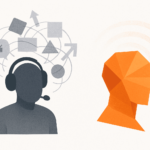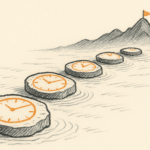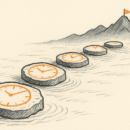It is time to let the poor participate in their own development
The poor people of Kenya woke up to an amazing revelation at the end of 2002: they had the power to remove a government that did not perform! This had seemed impossible even weeks earlier: a government that had systematically impoverished this country seemed destined to last forever, a millstone around the necks of its citizens.
With the New Year came a new realisation: Kenyan governments can be held accountable. The poor can march in their millions to the polling booths and send the bigwigs scattering. This was a true milestone in Kenyan history, a turning point that could change the fortunes of this country forever. ‘People power’ is here, and a fine thing it is, too. The government and its institutions are now on notice: deliver growth and effective services, or leave the stage to someone else.
But is it enough, this power that can only be exercised every five years? It is certainly necessary, but is it sufficient? No. A more systematic and more current mechanism is needed to ensure that governments do deliver. In the best private corporations, managers recognise that one of the most important tools they can have is a corporate ‘scorecard’: a systematic way of understanding whether they are delivering value to the customer. The scorecard picks a handful of key indicators, and monitors performance on these metrics. The benefits? A barometer of performance, delivered in ‘real time’, which keeps the pressure on and allows strategies to be fine-tuned.
To understand how this idea can be applied to public services, let me introduce you to a man called Dr. Samuel Paul. This international development specialist, who has advised the United Nations and the World Bank and taught at Harvard and Princeton, founded a non-profit NGO in Bangalore, India in 1993. He worked with a simple idea: using an innovative ‘citizens’ report card’ to monitor the delivery of public services.
In India, as in Kenya, the state continues to be the dominant provider and regulator of essential public services. The poor have no choice but to consume these services, good or bad. In Kenya, we know our water is poorly treated, and those of us who can invest in filters and bottled water. We know security is woefully inadequate, so many of us put up electric fences and hire private security companies. The poor have no such choices. They simply take what is given, and take the consequences. In Kenya, it is a long time since any public service, be it water, power, telephones or policing, was delivered with even a modicum of effectiveness.
The situation in Bangalore in 1994 was very similar. Dr. Paul recognised that the problem was not necessarily one of finance, but rather of poor implementation and delivery. And he saw that there was a need to focus attention on specific weaknesses so that something could be done. Who should point out these weaknesses? Why, who better than those who use the services! Thus the citizens’ report card was born.
Dr. Paul used standard sampling techniques: random surveys and focus-group discussions. Users of services were asked some specific questions: what public services do you most need; how satisfactory are the services currently provided; what specific aspects are satisfactory or unsatisfactory; and what improvements are recommended. For the first time, the user of public services was brought into the loop. The results were made totally open, and shared with the public and the service providers. The survey was repeated regularly and a public record kept of improvement or deterioration in service.
The results have been dramatic. From 1994 to 1999, the percentage of households satisfied with the water supply board, for example, rocketed up from just 4 per cent to 46 per cent. The power corporation saw a similar rise over the period. How did this happen? By the simple expedient of providing a measurement system. The report card concept galvanised the poor into action. Their individual complaints became a collective agenda. From being passive and disgruntled victims, they became active change leaders, armed with facts and figures.
But perhaps the most profound effect was on the service providers themselves. They suddenly found themselves under the spotlight of adverse publicity. This time, the evidence was quantitative, not just a set of ‘moan-and-groan’ anecdotes. The media weighed in with a spirited campaign to publicise the results. Under this sort of pressure, the agencies were stung into action. Far-reaching reforms were undertaken: internal systems were reviewed; training was introduced; grievance-redressal processes were strengthened; and periodic dialogues with households were formalised. This systematic strengthening of the public agencies has been very good for them: good for their staff motivation, good for their public image, good for their collective sense of self-worth.
The citizen participation model has spread beyond Bangalore to other Indian cities and beyond; it is being tried in Bangladesh, the Philippines, Vietnam and the Ukraine, amongst others. It is sorely needed in Kenya. We must grant the poor people of this country the power to have a say in service provision. This sort of initiative is inexpensive and simple to implement. It also provides a basis for a very useful dialogue between service users, service providers, and the government.
The Narc government should embrace this idea wholeheartedly. If it is serious about service delivery, let it allow an independent assessment of its success or failure in this regard. If it means to help the poor, let it give them the power to get involved in their own development. If it aims to boost efficiency in its parastatals, let it allow them to be held up to the litmus test of consumer feedback. If the government is effective, it will have a five-year public record of improvement in services to take into the next general election – a glittering prize.
At the heart of the community scorecard concept is the idea that the people who use services, who suffer the most from poor delivery, should be put at the heart of reforms. This is a strange concept in Kenya, where successive ‘mama na baba’ governments have taken a highly condescending attitude towards the poor. The services they need are conceived by ministry planning teams and in the boardrooms of parastatals. The assumption is that only the high and the mighty, the learned and the scholarly, can possibly know what is good for the wretched masses.
We know now that this is a dangerous fallacy, and one that has long stifled change. Let us open the change agenda to involve those at the receiving end. A citizen’s report card, if used properly, is a tool that will allow us all to take more responsibility for our development as a nation. It will separate the leaders who genuinely want to improve the lot of the poor from those empty politicians who merely want to talk about it for 5 years. It will move the focus of our attention to results. It is an idea whose time has come in Kenya.

Buy Sunny Bindra's new book
The X in CX
here »
Popular Posts
- Where are you rushing to—your funeral?June 29, 2025
- How to spot a real thinkerJune 15, 2025
- The pause that saves usJune 8, 2025
- Built the app, forgot the flowJune 22, 2025
- The map will appear—once you start walking.July 6, 2025











